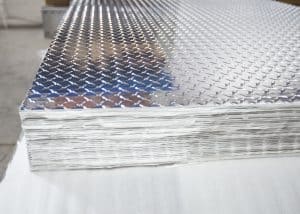Trump’s steel and aluminum tariffs may increase costs for home buyers and renters

The White House announced on Thursday that it will impose tariffs on steel and aluminum imports from Canada, Mexico and the European Union starting Friday. Home builders slammed the plan when the tariffs of 25% on steel imports and 10% on aluminum were announced in March. “This announcement by the president could not have come at a worse time,” Randy Noel, chairman of the National Association of Home Builders (NAHB) and a home builder and real-estate developer from LaPlace, La., said in a statement.
“Tariffs hurt consumers and harm housing affordability,” he said.
The tariffs on steel and aluminum likely will have an impact on new home prices if the cost of those materials increases in the U.S. But that effect will likely be more muted because new homes typically have more wood than metal, said Aaron Terrazas, senior economist at real-estate website Zillow. Whereas buying lumber represents one-third of the cost of building a new home, steel and aluminum contribute to between 0.5% and 1% of a home’s cost.
New apartment buildings and condos will be hardest hit
And home-building activity had begun to pick up in recent months. Therefore, there’s less potential for an inventory slowdown. “The supply situation isn’t quite as dire,” Terrazas said. “The concern is more the supply at the right price point, and adding to construction costs will only make it harder to build at an affordable price point.”
Lumber tariffs from Canada had a bigger impact
In November, the Department of Commerce imposed a 20.83% tariff on shipments of softwood lumber from Canada. While the move was forecast to spur new jobs and increase domestic lumber production, it caused the price of lumber to jump nearly 15%. “Those costs have largely been passed along to consumers, and you’ve seen new home prices touch new highs,” Terrazas said.
It added $6,000 to $10,000 to the cost of a median-priced home, he said. By contrast, the NAHB estimated that the cost of an average multifamily unit would increase by just $478.
But the cost of new homes isn’t the only way tariffs have an effect on single-family housing. The Canadian lumber duty was also projected to reduce investment in single-family structures by $1.1 billion, according to the NAHB. If a similar reduction were to now occur because of these new tariffs, that could slow new home building. Inventory constraints could be further exacerbated and fuel even more competition for homes.
Source: marketwatch.com















 Accessibility
Accessibility